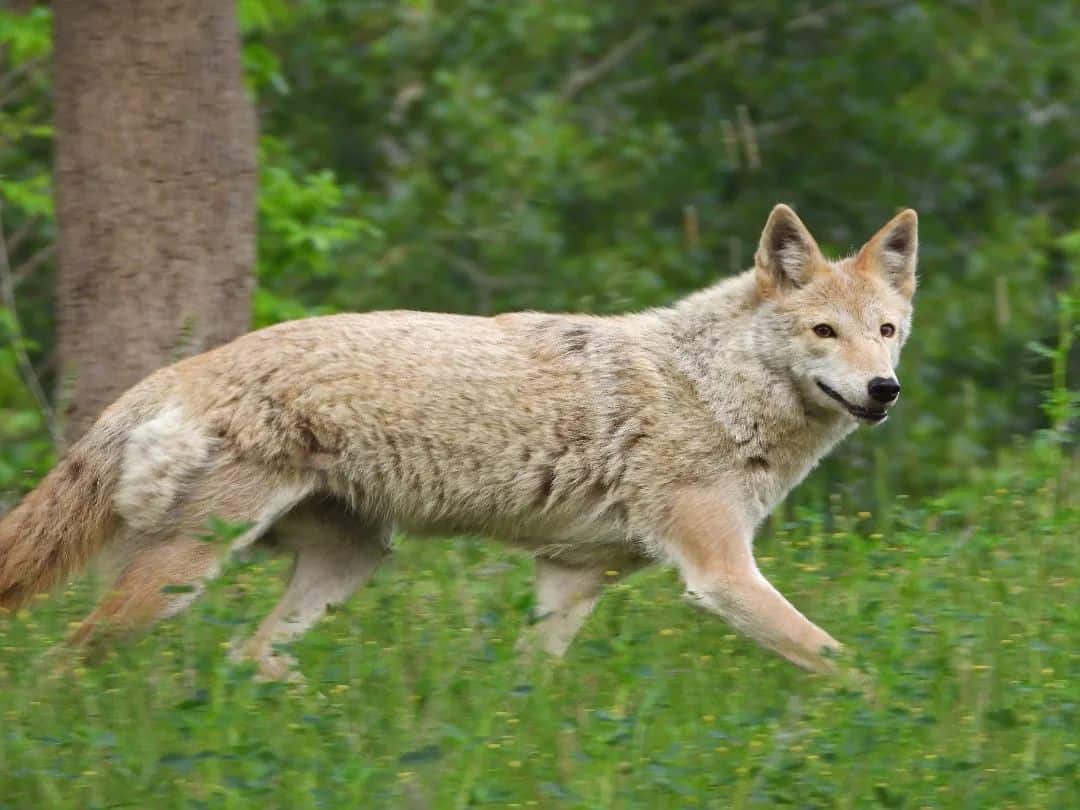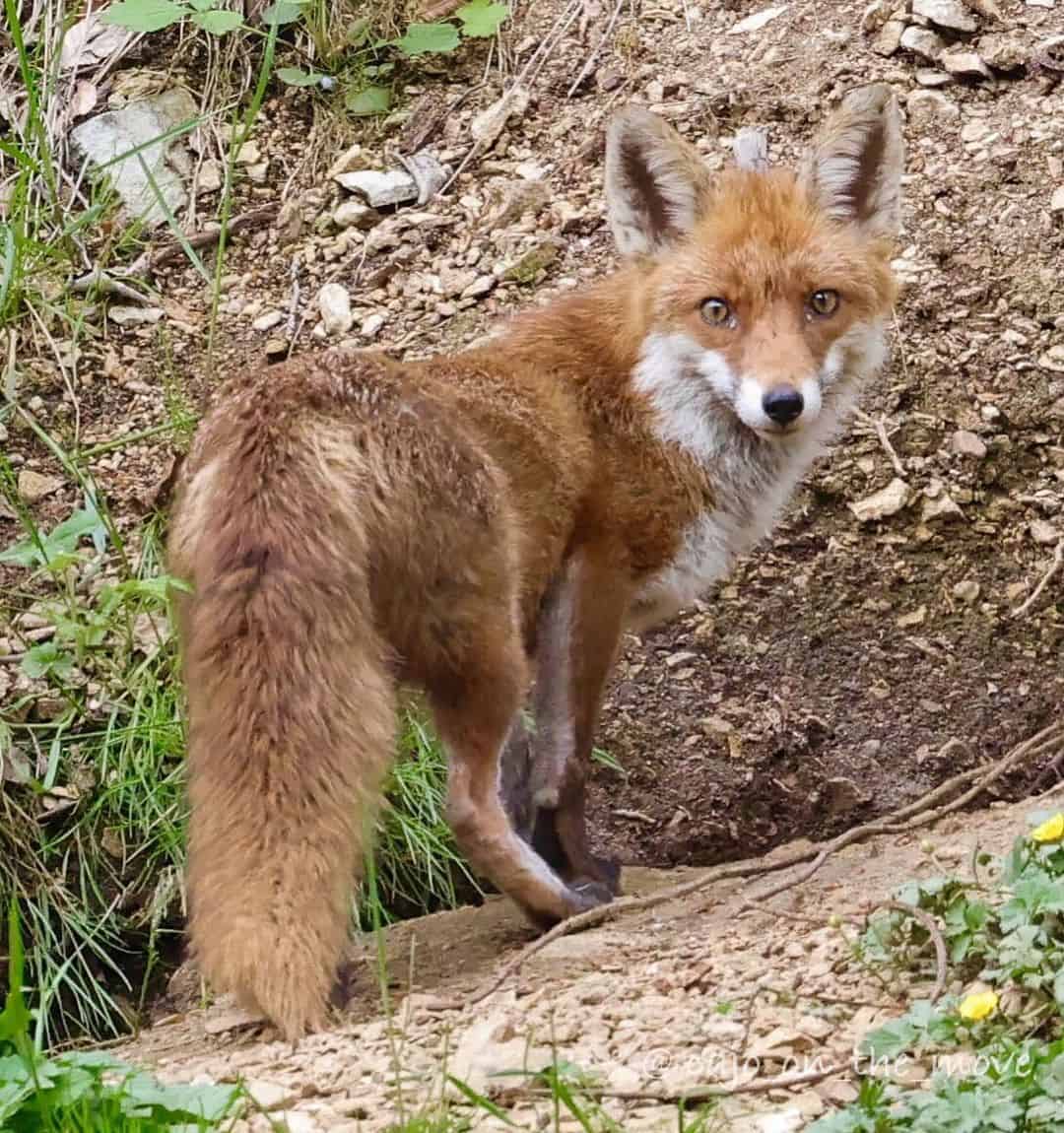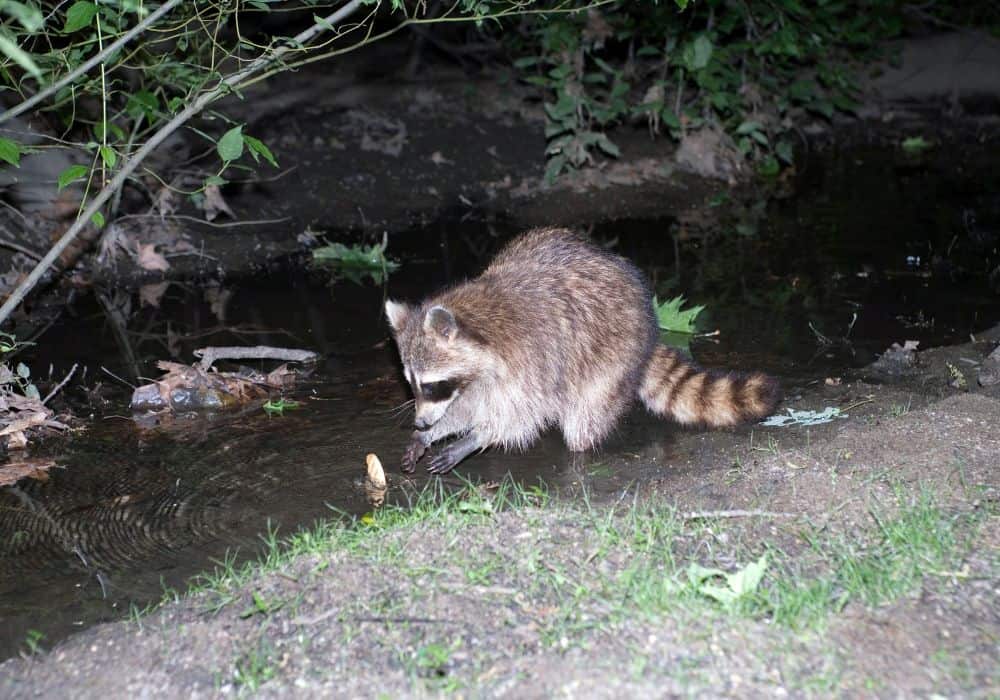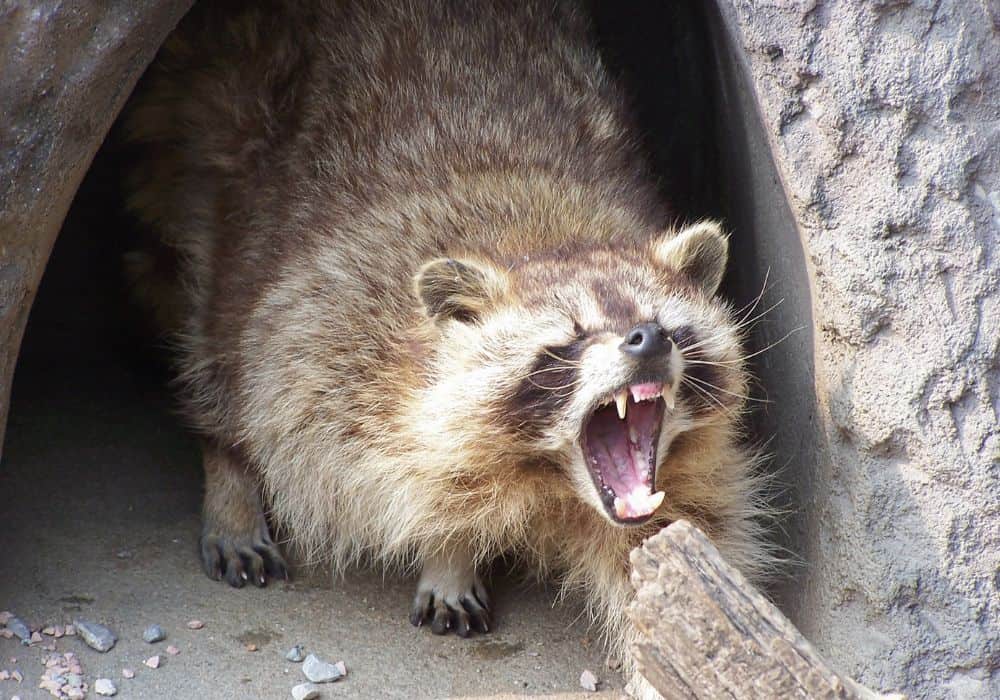Notoriously known for their black masks, dark eyes, and ringed tails, raccoons are little bandits you can find in meadows, forests, and even your backyard going through garbage, trash cans, or litter.
They may appear cute and cuddly, but this doesn’t stop larger animals from preying on them. So, what are some raccoon predators you should know about?
Many animals will stalk, hunt, and prey on raccoons if needed. This includes larger animals from canine families, wild cats, and larger birds of prey. Some of these wildlife creatures include;
- Mountain Lions
- Bobcats
- Great Horned Owl
- Golden Eagles
- Bald Eagles
- Bears
- Cougars
- Ocelots
- Lynx
- Coyotes
- Hawks
- Alligators
- Wolves
- Fisher Cats
- Pumas
- Pythons
- Anacondas
- Some dog species
- Red foxes and several other creatures.
Raccoons might find themselves at the bottom of the food chain, but this doesn’t stop them from defending themselves when preyed on by these larger animals. They employ several defense techniques we will look at later on.
Let’s look in-depth at some raccoon predators and how they hunt them in the wild.
What Animals Prey On Raccoons?
Raccoons are not free to roam about in the wild as they want. Like other animals, raccoons have a seat in the food chain and will be considered food for larger, stronger, and faster animals.
Here are some natural raccoon predators and how they hunt them :
1. Wolves
Wolves are some of the most prominent furry members of the canine family that eat animals like raccoons. Wolves and raccoons may have similar facial structures and fur colors, but this doesn’t make them friends.
Raccoons are much smaller than wolves, making them easy prey to feast on. Wolves prefer to hunt in packs, hunting animals larger than raccoons, like deer and elk. However, sometimes a lone wolf will take an interest in a raccoon and stalk it till it becomes food for the day.
This doesn’t mean you can’t find wolves and raccoons in the same habitat, you almost always will, but their paths don’t often cross as the two animals have varying habits. However, on the rare occasions that their paths cross, raccoons are in danger of being eaten.
2. Alligators
How do raccoons and alligators find themselves in the same habitat? Well, raccoons are famous for “washing their food” before they eat. This habit makes them fond of water as they are strong swimmers and they are often found around water bodies.
Raccoons also like to feed on smaller sea creatures like crayfish and clams, so they come around water bodies in search of them.
As you know, water happens to be an alligator’s natural habitat. So, when raccoons come around, splashing and causing a stir, an alligator’s instinct will be to pounce. Of course, the raccoon doesn’t stand a chance, except it is fast enough to climb a tree.
3. Snakes
It is usually the other way around, where raccoons prey on small snakes. However, the tables turn once the raccoon encounters a bigger snake. This includes pythons and anacondas. Raccoons don’t stand a chance against these venomous snakes as their size disadvantages them.
Venomous snakes usually go for smaller prey like mice, but they will attack raccoons without hesitation if the situation calls for it. Although venomous snakes and Raccoons do not constantly interact in nature, when they do, it almost always ends up in a bloodbath for the black-eyed bandits.
4. Coyotes

Image Credit: roberts.m.lou
Coyotes are considered predators of raccoons, even though they don’t always hunt them. Coyotes prefer to prey on smaller, weaker animals that will not put up a fight and will be easy to kill. In this case, raccoons will always fight back, no matter how little.
Hence, coyotes almost always hunt smaller baby raccoons because they are weaker than adult raccoons. If a coyote goes after an adult raccoon, it is most likely a last resort because adult raccoons are much harder to kill.
Coyote and Raccoon habitats may overlap when they find themselves in areas with many trees and vegetation. However, they don’t always interact and might even ignore each other when their paths cross.
5. Hawks
Hawks are some of the most notorious birds of prey that will add raccoons to the list of animals to hunt. They have incredibly sharp eyesight and can pursue both in the day and night, putting raccoons at a disadvantage.
These predatory birds will typically go for smaller animals like rodents, snakes, and lizards, but they will occasionally go for rabbits and raccoons if needed. Hawks hunt raccoons by stealthily swooping down and using their sharp talons to snag them up into the air. When this happens, the ill-fated raccoon has little to no chance of survival.
6. Fisher Cats
Fisher Cats are stout little creatures that have a lot of fun stalking and hunting animals like birds, mice, rabbits, and raccoons. As part of the Weasel family, these animals often make their homes in crevices, burrows, and fallen logs of wood. Unfortunately, raccoons are also found around these areas.
Even though raccoons are more miniature than fisher cats, they tend to weigh about the same. This doesn’t exclude them from being hunted by fisher cats. When attacked, raccoons often put up a good fight but only sometimes emerge victorious.
7. Red Foxes

Image Credit: cajo_on_the_move
The red fox is the most common species of fox, which is about the size of a medium-sized dog. This means it is much larger than a raccoon, which would be easy prey to hunt. Red foxes are from the same family as wolves and coyotes but don’t hunt in packs as they do.
When red foxes hunt, they usually do so in the daytime and will only sometimes come across raccoons. However, when they do, they do not hesitate to attack as they are larger and more robust than the little critters.
However, red foxes prefer to trap weakened or smaller raccoons because they make easier prey. Besides raccoons, foxes love to prey on smaller creatures like mice and rabbits or sometimes eat fruits.
How Do Raccoons Defend Themselves From These Predators?
Being smaller and weaker animals doesn’t mean raccoons allow themselves to be easily eaten. These mammals will often use certain defense mechanisms to try and save their skins as best as possible.
Raccoons might be considered prey, but they are not easy prey. Most predators prefer not to hunt raccoons because they do not make it easy to accomplish. Here are some interesting ways these little fighters keep themselves from being eaten;
1. Using the Dark to their Advantage
Believe it or not, being a nocturnal creature makes survival far easier. Raccoons carry out most of their activities under cover of the night sky and sleep during the day, although you may find one or two of them active in the daytime.
Some major raccoon predators like fisher cats, alligators, and mountain lions are more active during the day. By hiding out in their dens in daylight, raccoons automatically reduce the number of animals they must run away from.
Being nocturnal doesn’t mean you will never find a raccoon when the sun is out; you will. However, you will most likely find them in larger raccoon populations at nighttime.

2. Fighting Back
As mentioned, being smaller doesn’t mean raccoons will automatically allow themselves to be eaten. They will attack as a last resort when faced with no other choice. The little critters often use their claws and sharp teeth to hurt their attacker as much as possible.
Raccoons are also somewhat strong for their body size. Their size makes them able opponents, meaning they can even fend off animals that are slightly larger than they are, even if they walk away hurt.
3. Climbing Trees
Raccoons are excellent climbers, giving them an edge over certain predators that cannot climb trees, such as alligators and bears. These critters can use their front paws to grip tree barks and scale efficiently.
Raccoons can also use branches to move to other trees and find safety, or they wait out their predators till they get tired and leave.
4. Trying to Intimidate their Predator
Like a regular house cat, raccoons can appear intimidating even when they don’t stand a chance against an attacking opponent. They do this by arching their backs, huffing, hissing aggressively, and will growl just like cats do.
When raccoons use this scare tactic, they make themselves appear bigger than they actually are, possibly chasing their predator away. They also thrash their tails around and try to appear menacing. Sort of like saying, “Try me if you dare.” Even when they employ all these antics, they prefer to be left alone.
Conclusion
Raccoons make a tasty meal for several animals, including bobcats, great horned owls, alligators, and more. These black-eyed critters do not go down without putting up a fight. They defend themselves and sometimes attack. Even though raccoons are low on the food chain, they eat bird eggs, insects, turtles, frogs, fish eggs, rats, and squirrels.
